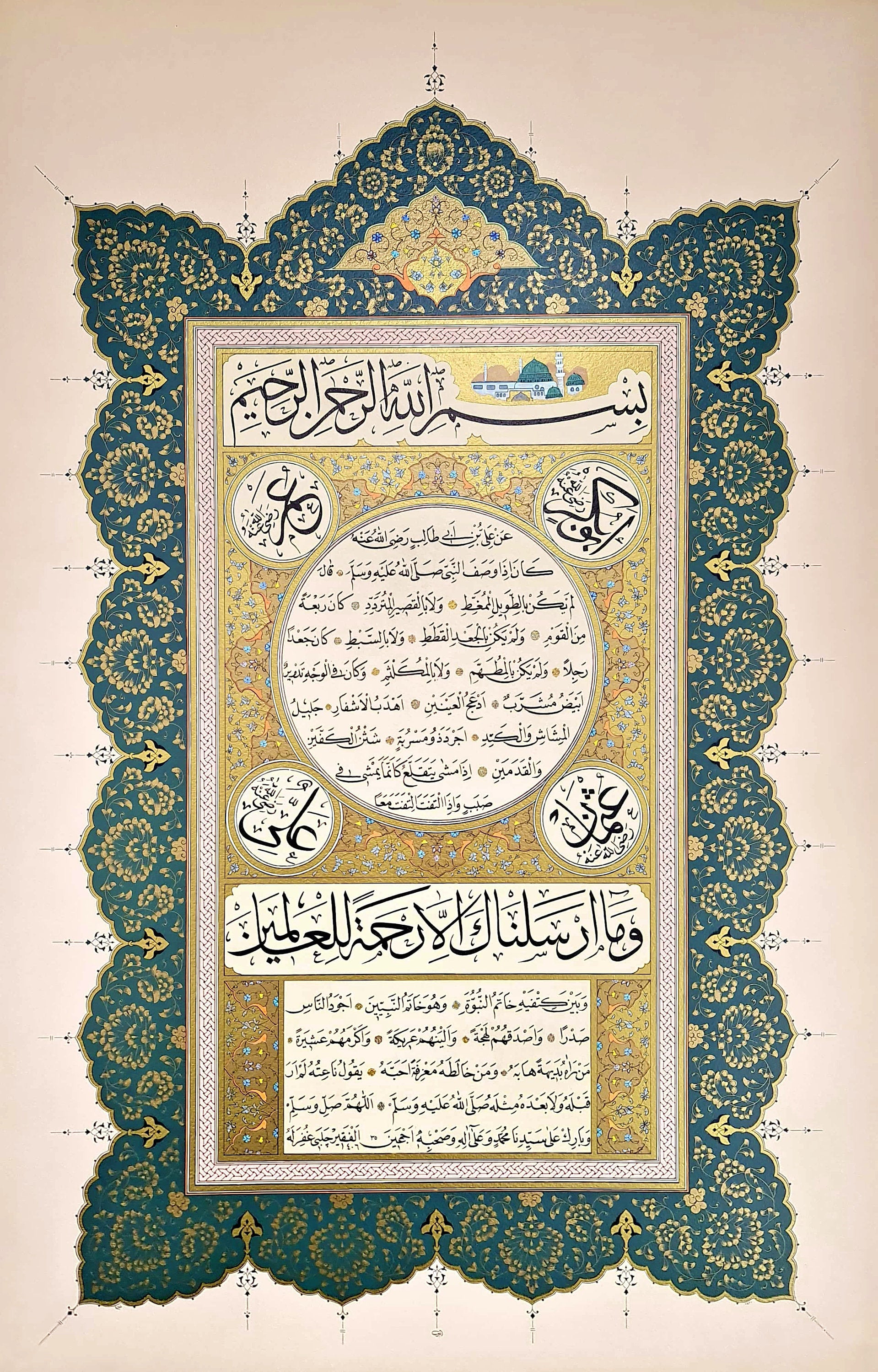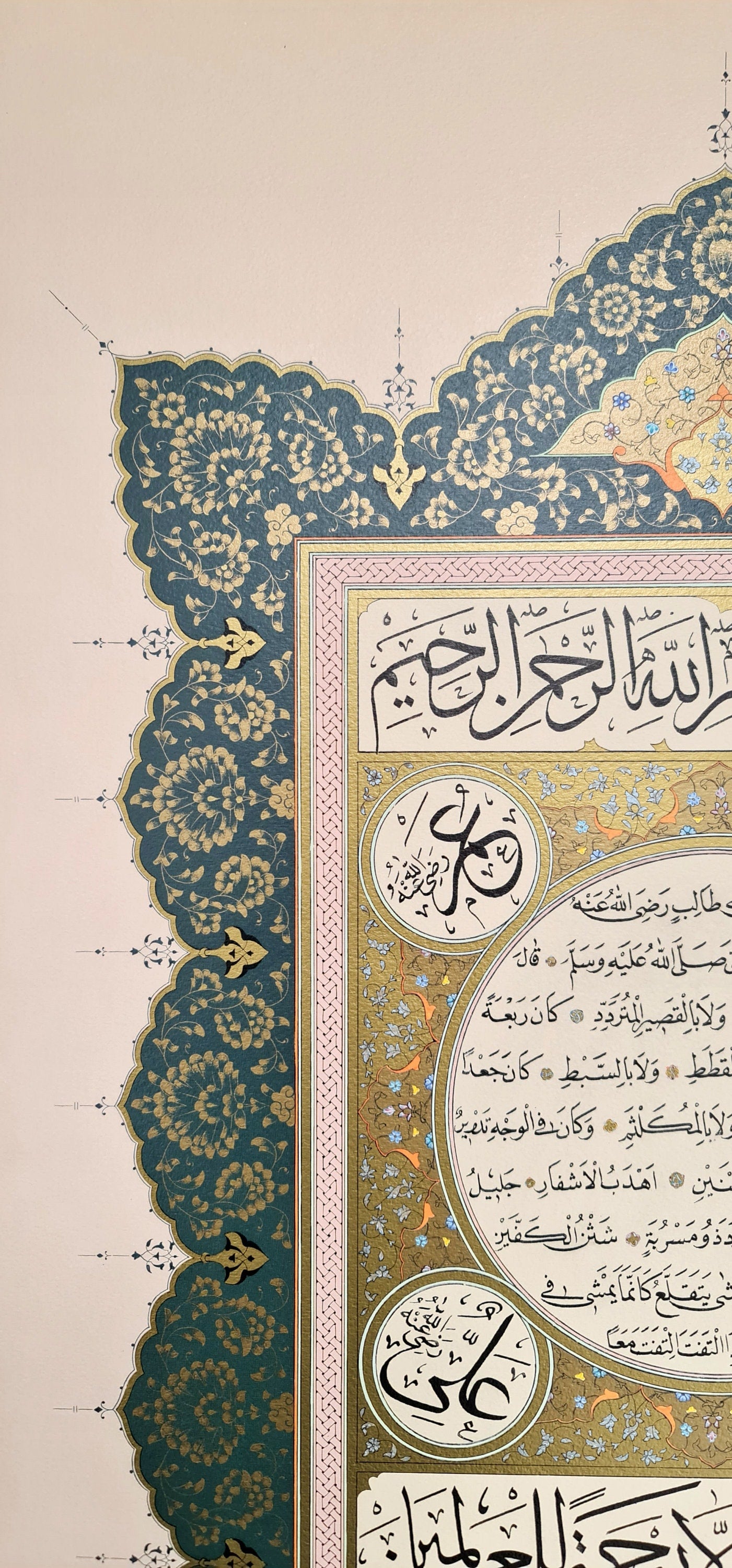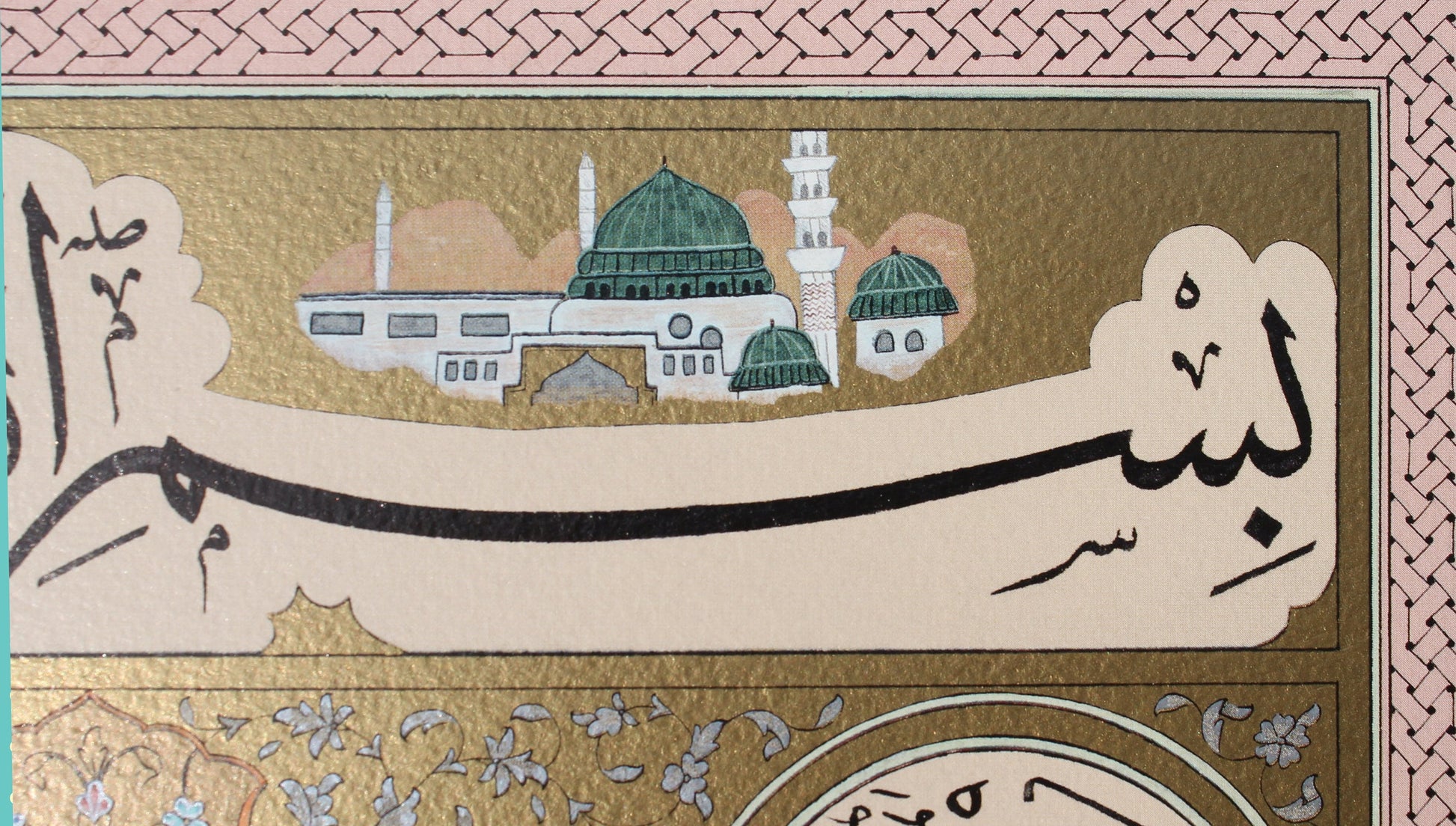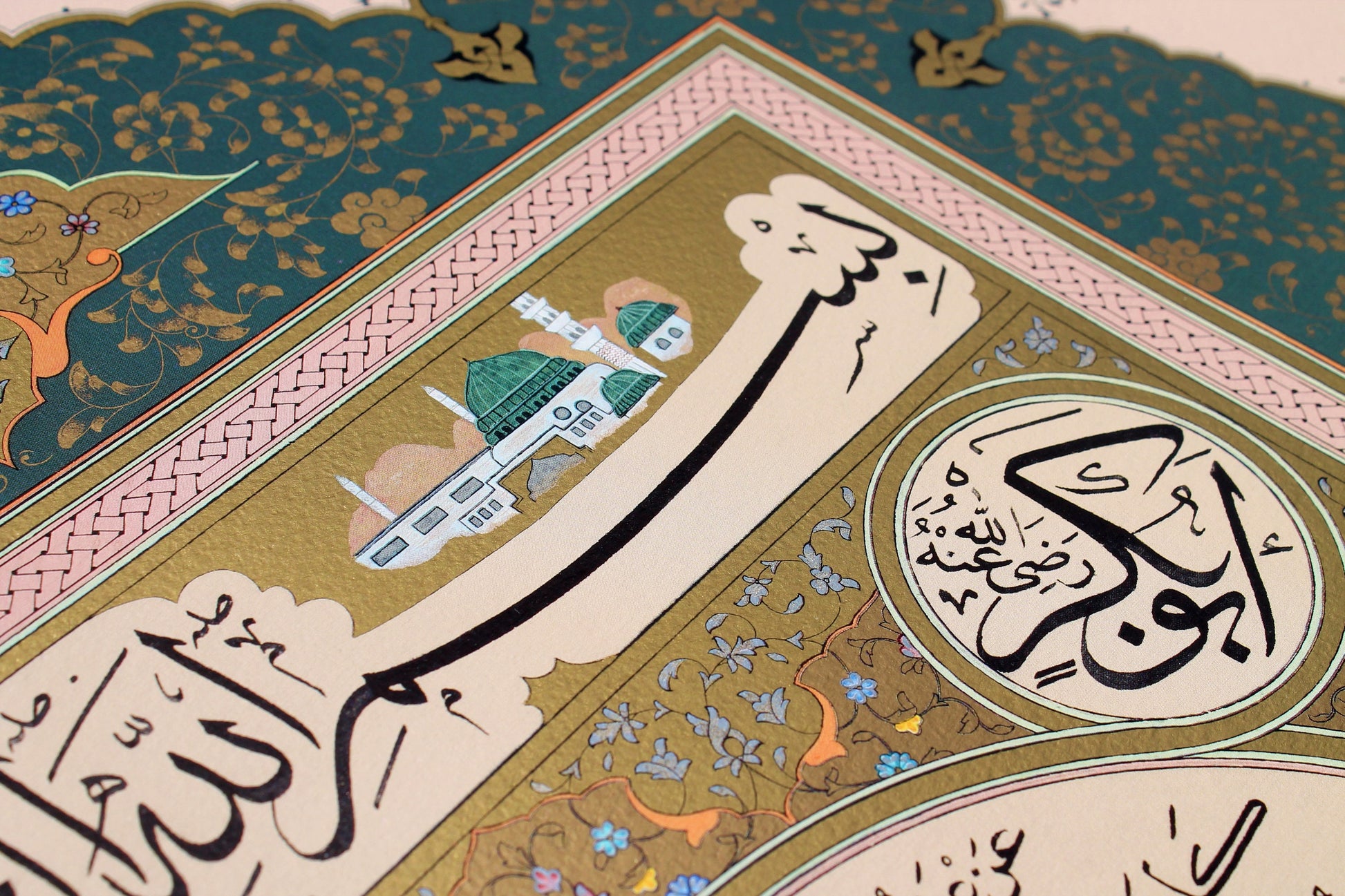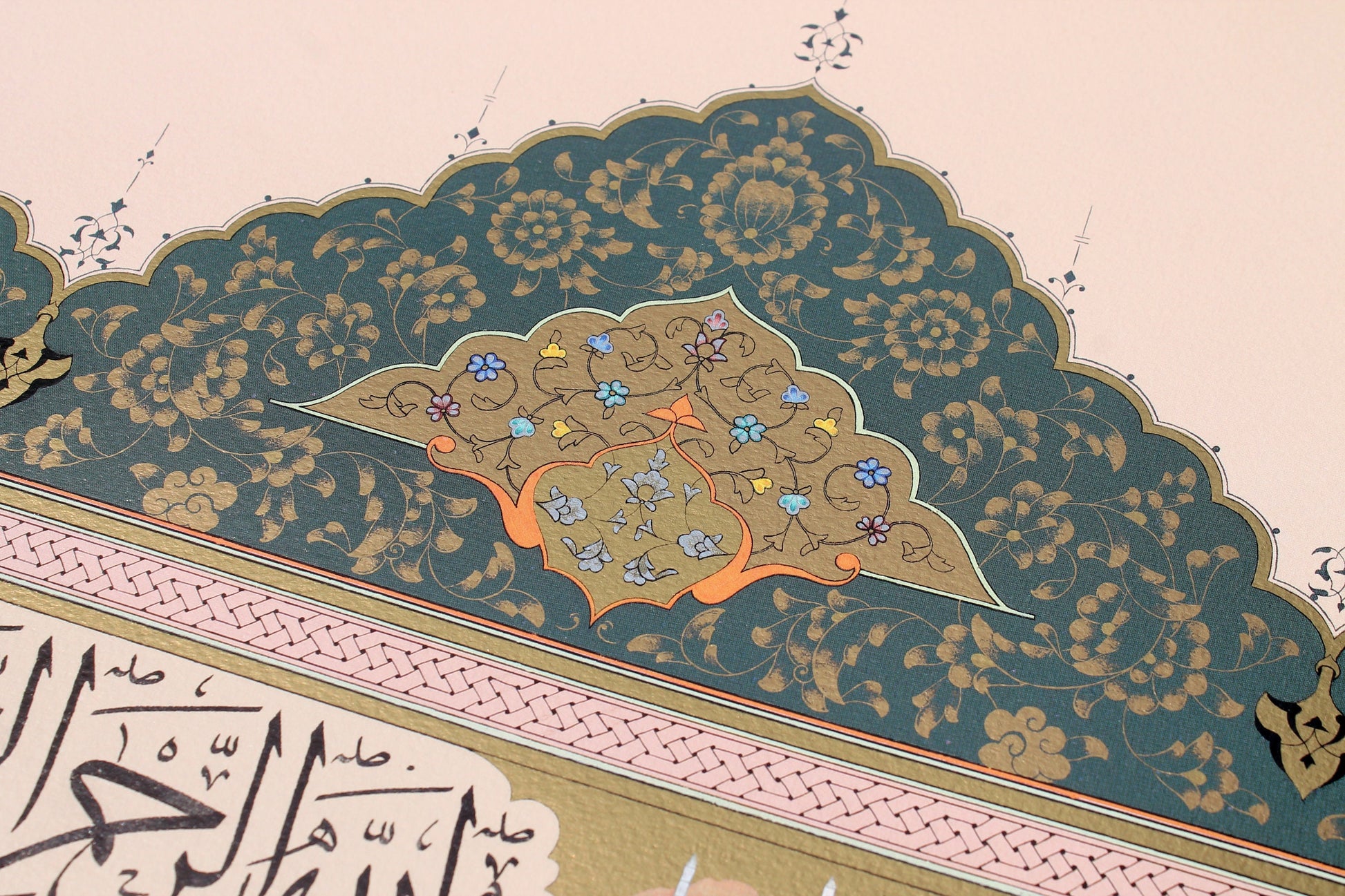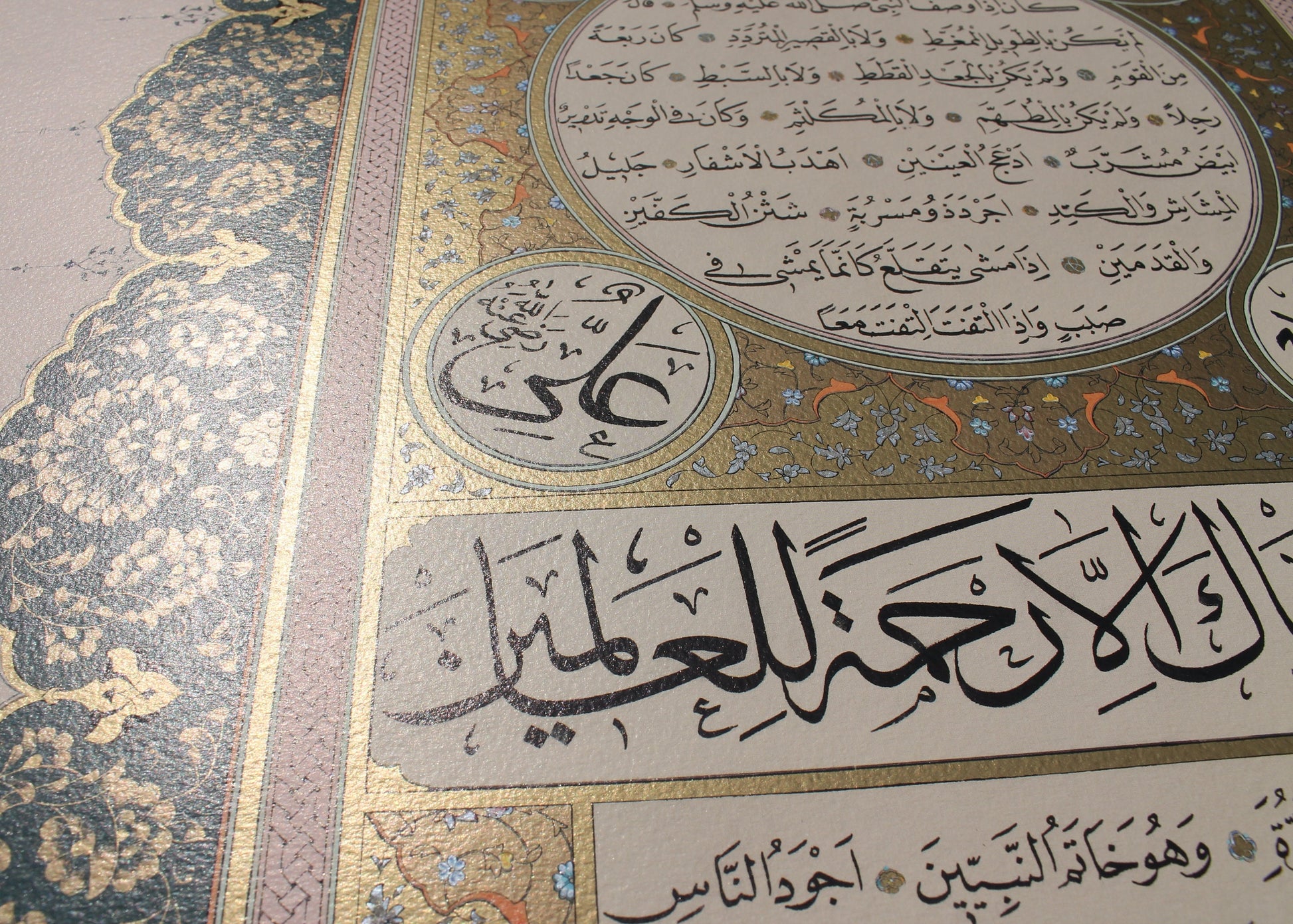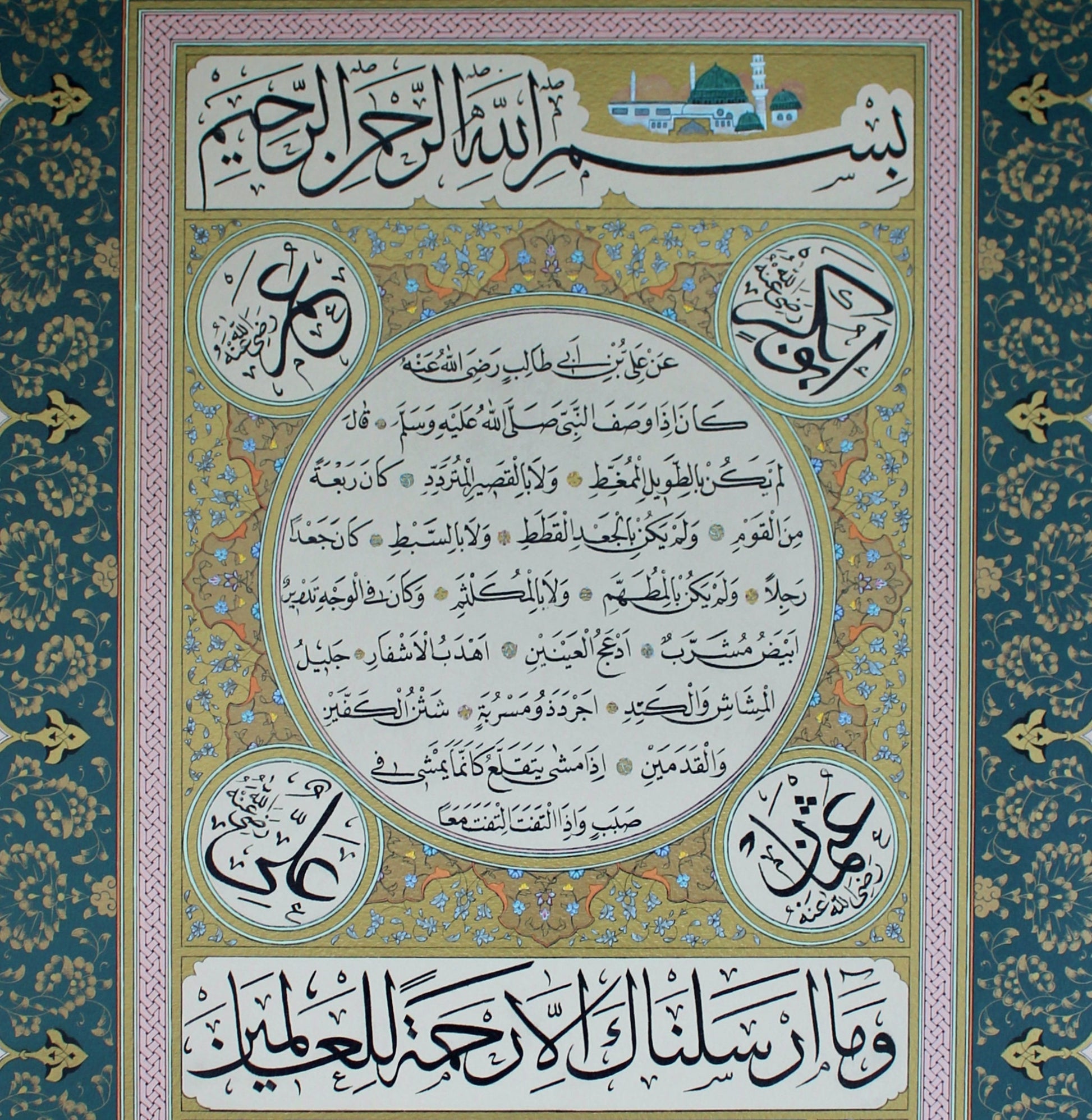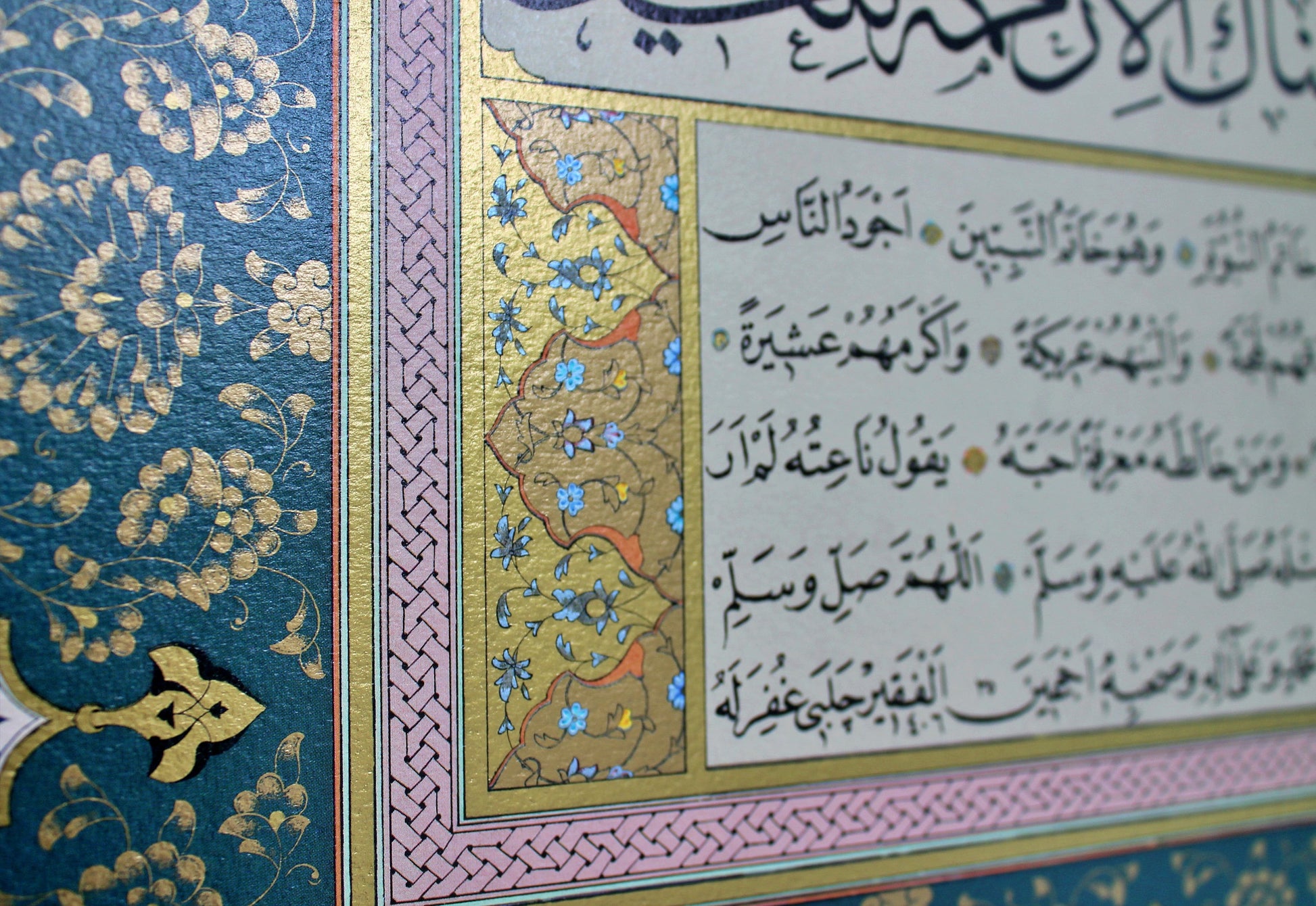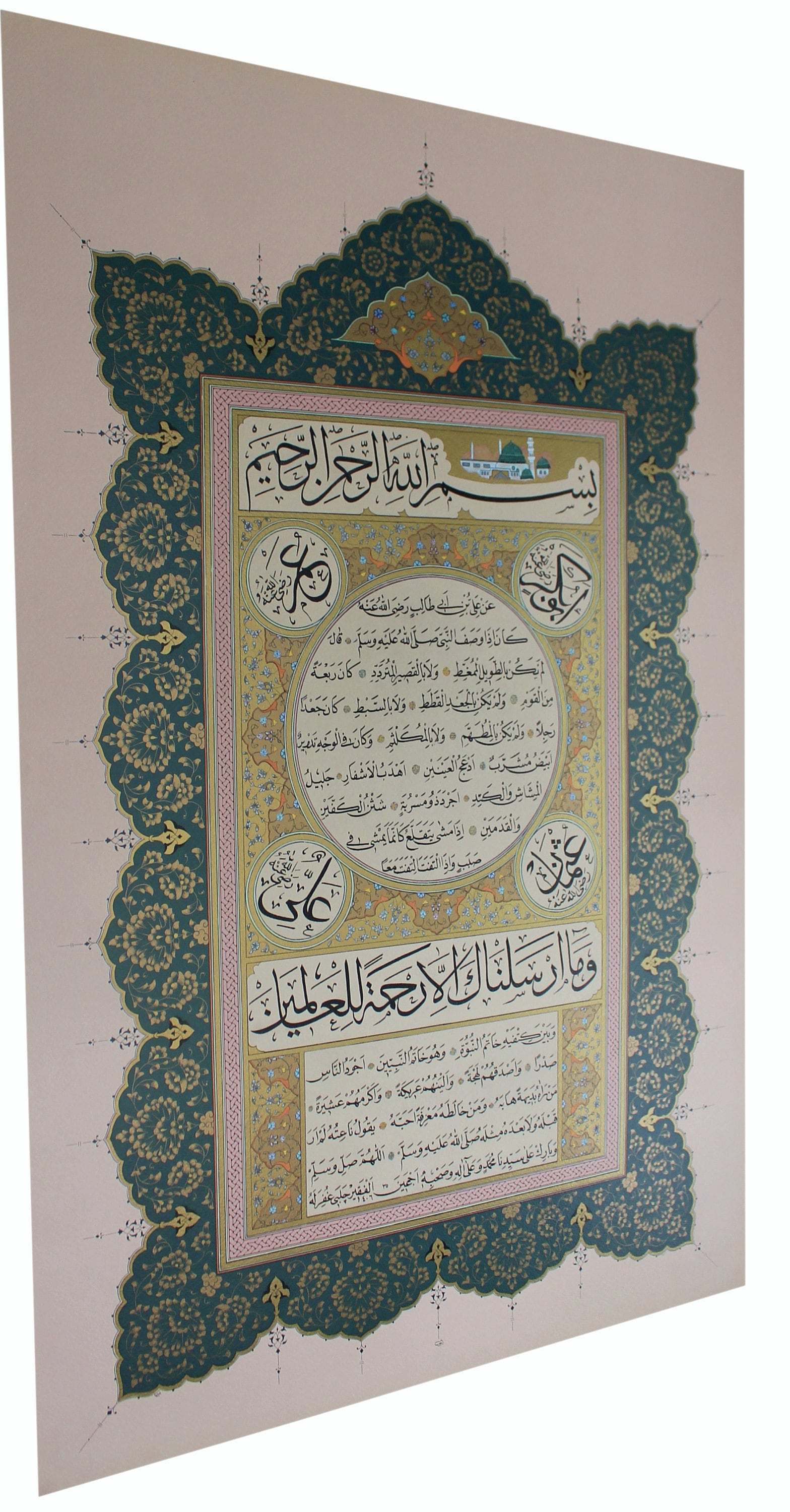sabilarthouse
Calligraphy with physical description (hilya) of the Prophet Muhammad by Hasan Çelebi | Stunningly illuminated Islamic wall art
Calligraphy with physical description (hilya) of the Prophet Muhammad by Hasan Çelebi | Stunningly illuminated Islamic wall art
Couldn't load pickup availability
This graceful piece features the hilye (verbal portrait) of the Prophet Muhammad ﷺ.
It has been elegantly inscribed by the renowned Turkish master calligrapher Hasan Çelebi, while the suitably dignified tezhip (illumination) has been executed jointly by Ayten Tiryaki and Şeyma Okur.
At the head of the work is the basmala, accompanied by a breathtaking illustration of the resting place of our master Muhammad ﷺ. The large, central roundel below contains a hadith from the collection of Imam al-Tirmidhi that has been narrated from Imam 'Ali (may God be pleased with him).
The hadith describes the physical qualities of the Prophet as well as his noble characteristics: [Narrated] from Ali, may God honour him, when he described the Prophet (ﷺ) he said: He was neither very tall nor excessively short, but was a man of medium size. He had neither very curly nor flowing hair but a mixture of the two. He did not have a large body. He did not have a very round face, but it was so to some extent. His complexion was reddish-white. He had wide black eyes and long eyelashes. He had large joints and the portion between the two shoulders was broad. He was not hairy but had some hair running from the chest to the navel. He had thick palms and feet. When he walked he raised his feet as though he were walking on a slope. When he turned round he turned completely. [Break in text, which continues below verse 21:107] Between his shoulders was the seal of prophecy, and he was the seal of the prophets. He was more generous in spirit than anyone else, truer in utterance, gentler in nature and nobler by tribe. Those who saw him suddenly stood in awe of him, and those who shared his acquaintanceship loved him. Those who described him said they had never seen anyone like him before or since [Adapted from the translation of Tim Stanley in 'From text to art form in the Ottoman hilye].
Surrounding this larger roundel are four smaller roundels carrying the names of the four Rightly-Guided caliphs (Abu Bakr, ʿUmar, ʿUthman, and ʿAli), which feature in the four corners around the center.
Below this is verse 21:107 of the Qur'an, 'It was only as a mercy that We sent you [Prophet] to all people.' The hilye also includes the prayer: 'O Allah, send Peace and Blessings upon our master Muhammad, and the entirety of his pure family and companions.' This is followed by the calligrapher's signature on the final line of the piece: 'the poor, destitute one (al-faqir) Çelebi, may God pardon his sins, 1406 [1988-89]'.
===============
High-quality lithograph print
Size: 680 x 440 mm.
Calligrapher: Hasan Çelebi
Illumination: Ayten Tiryaki and Şeyma Okur
===============
*This item does not include a frame. For advice on framing, please contact us.
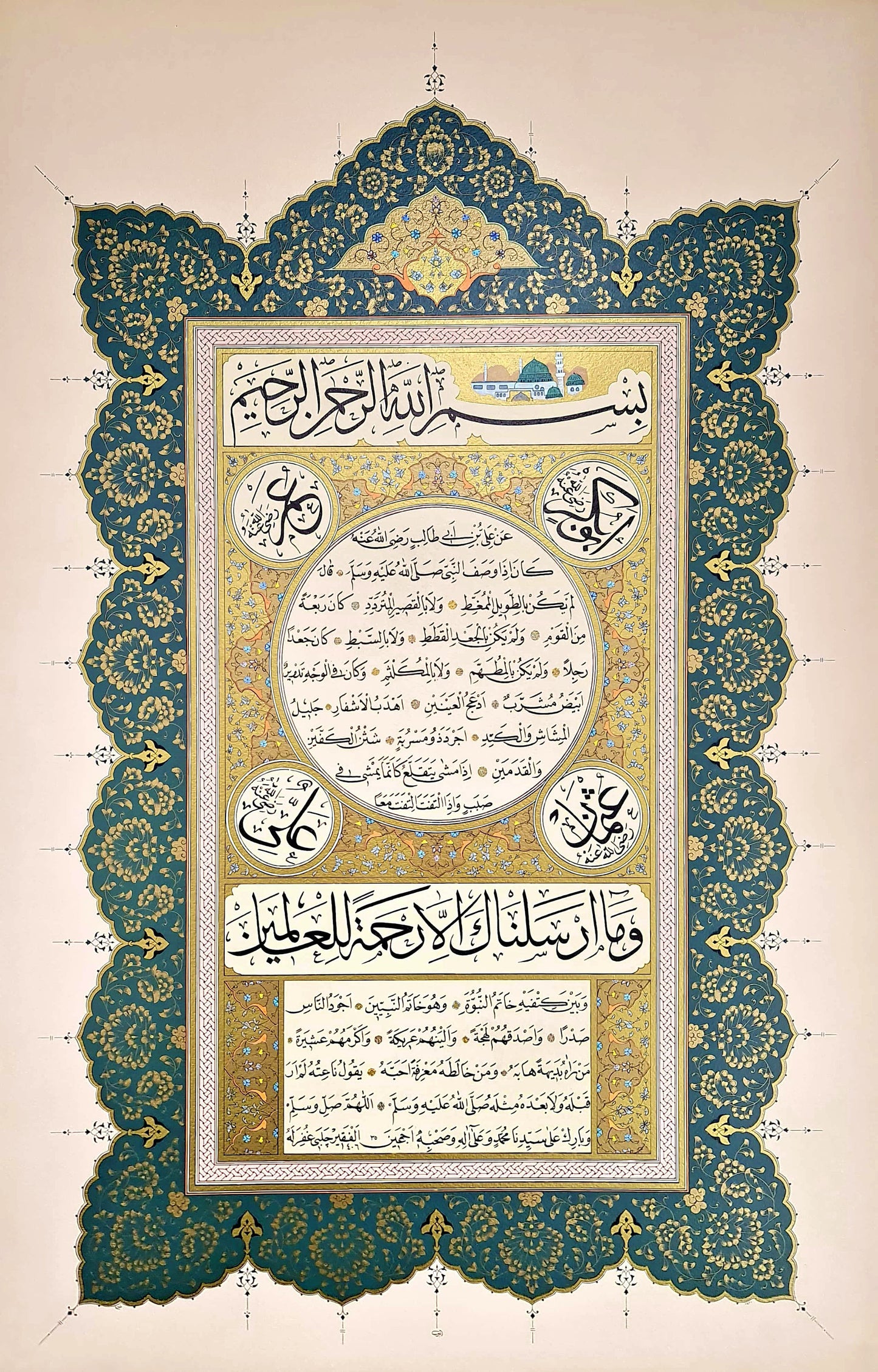
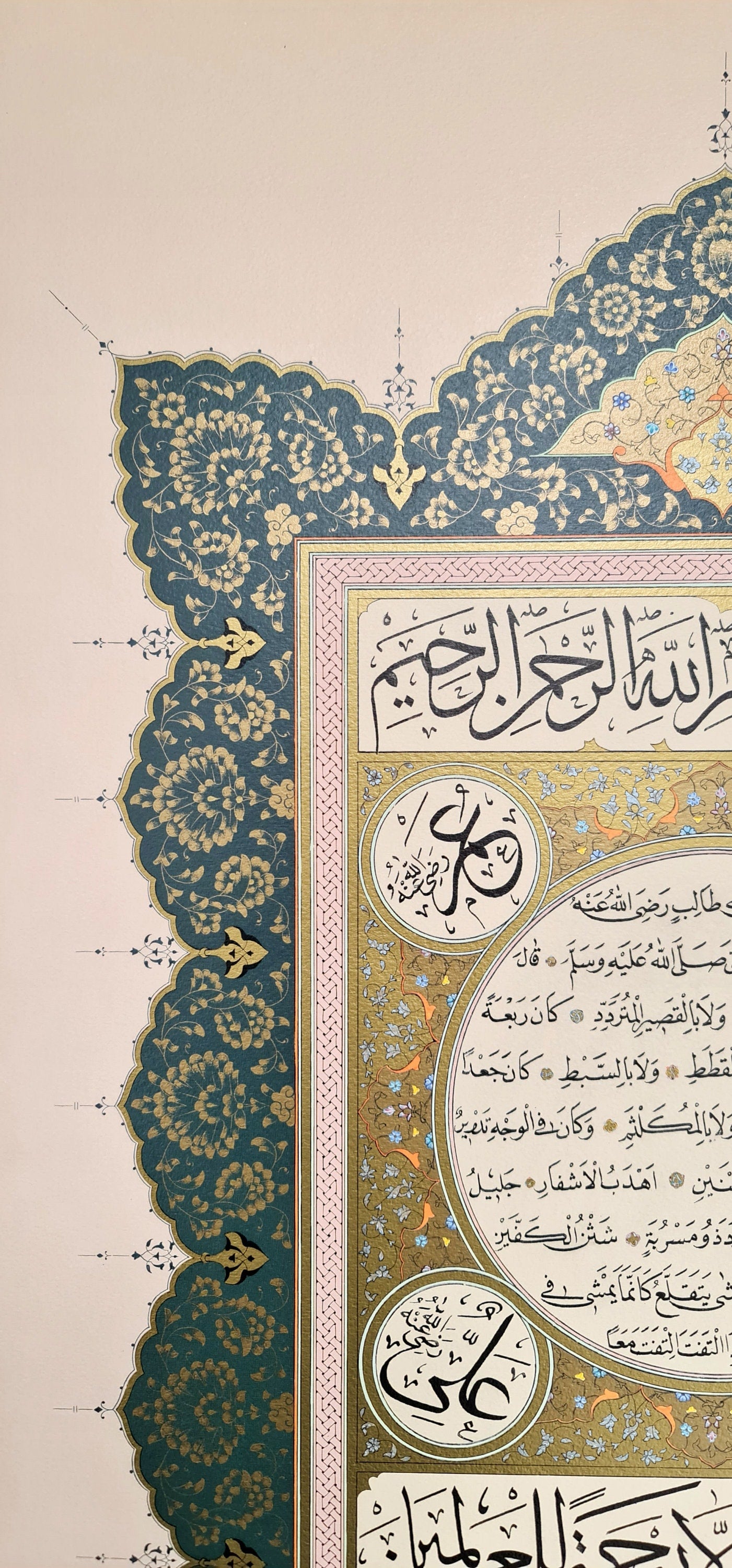

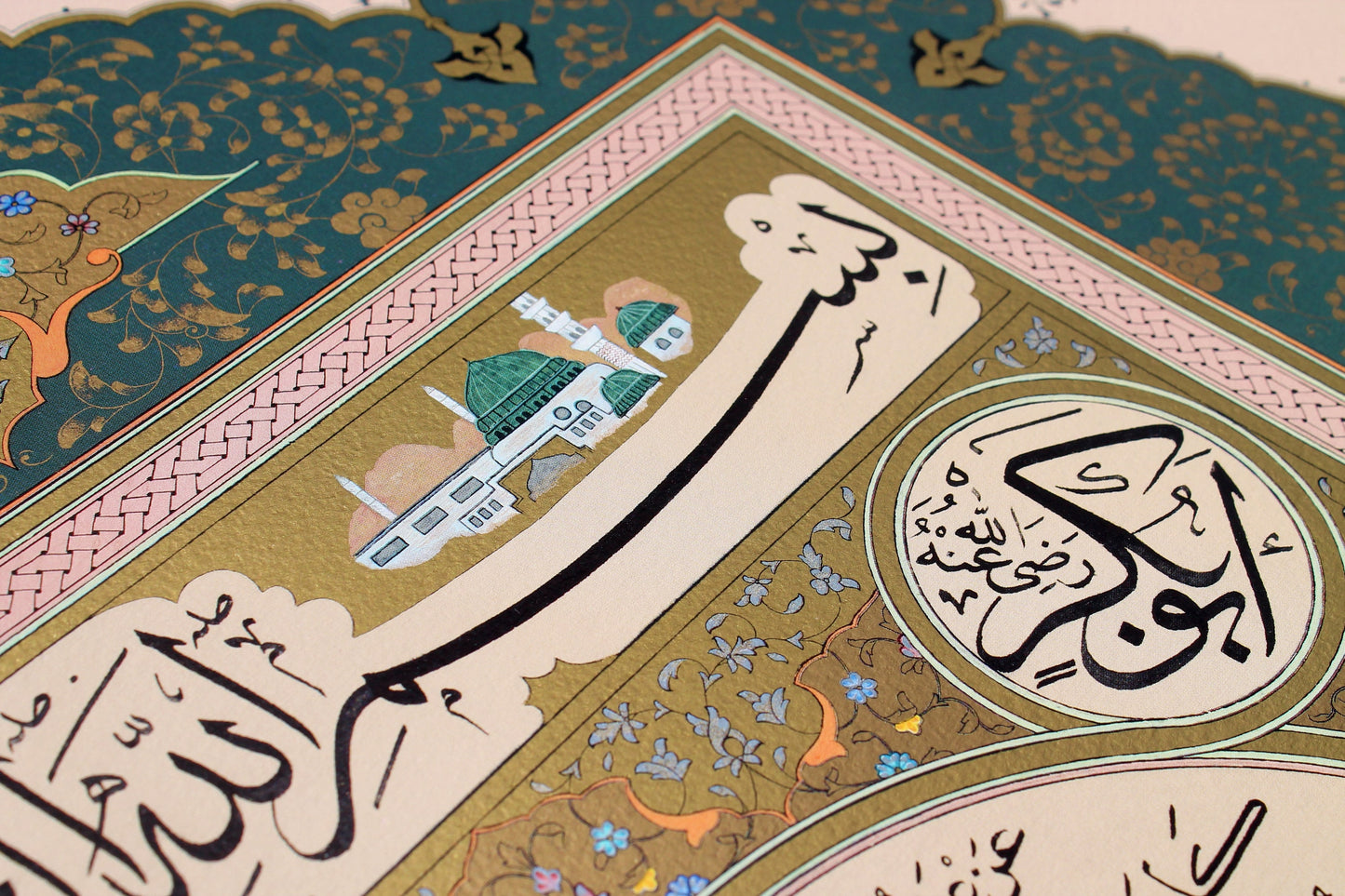
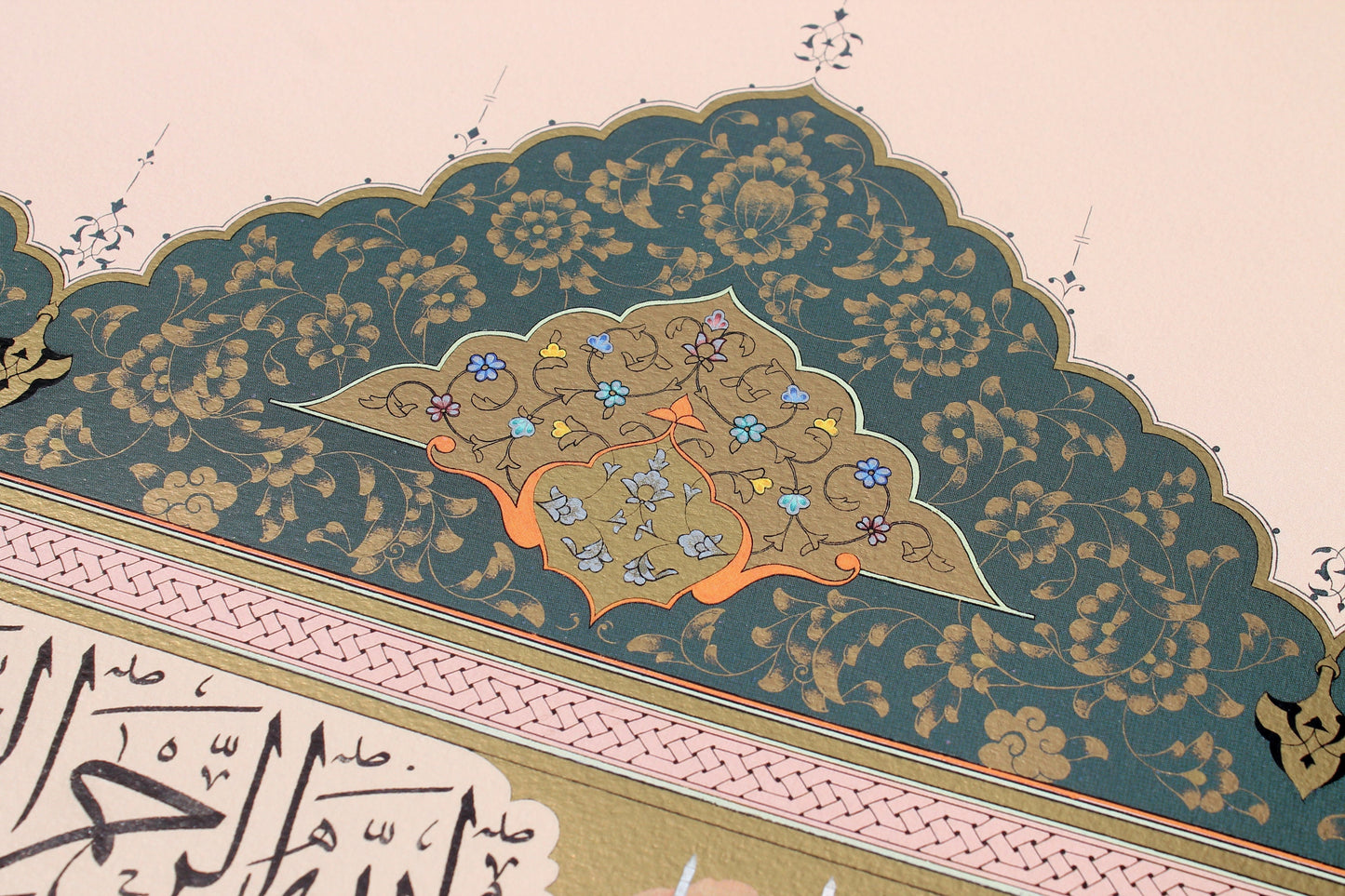

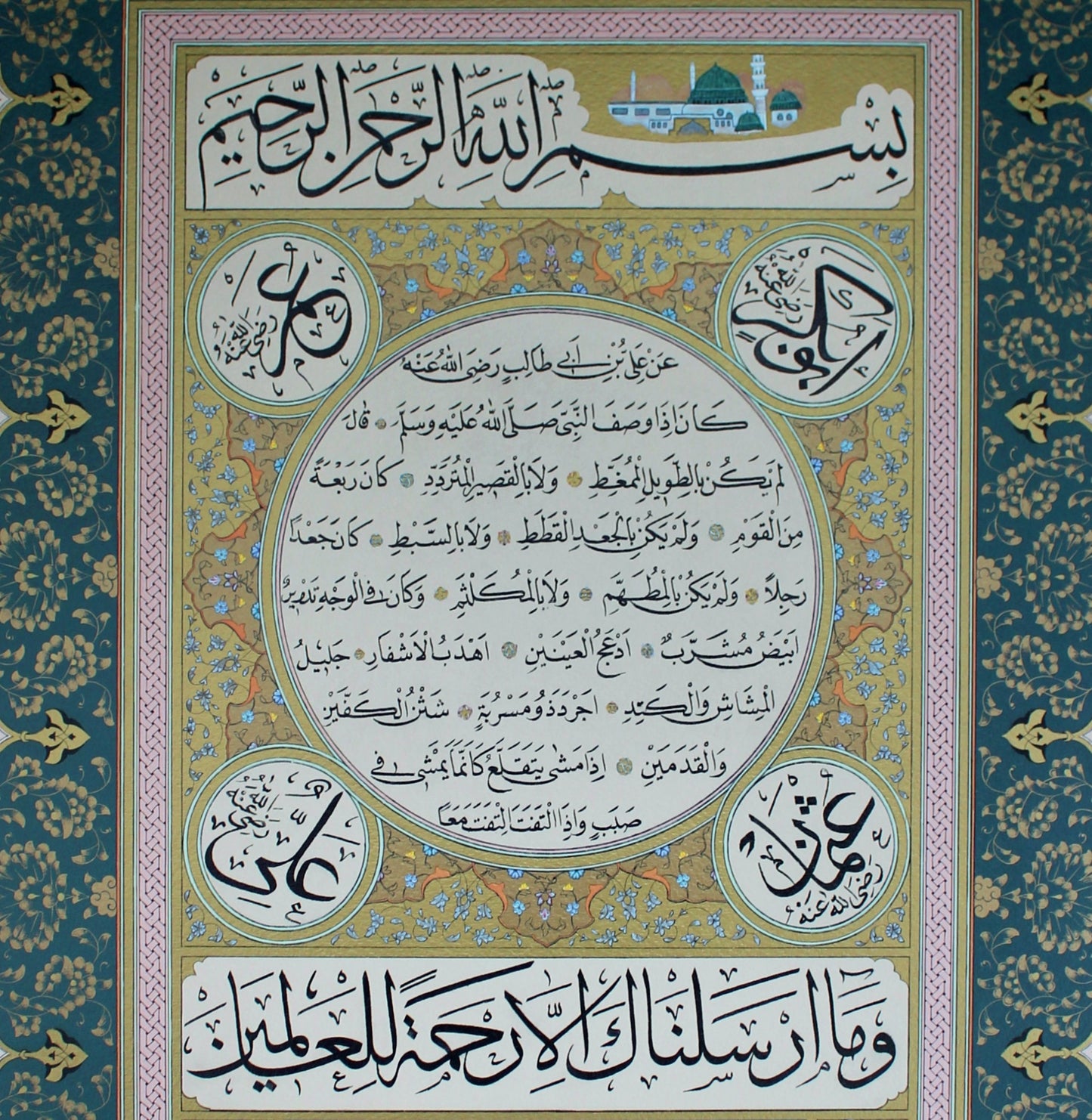
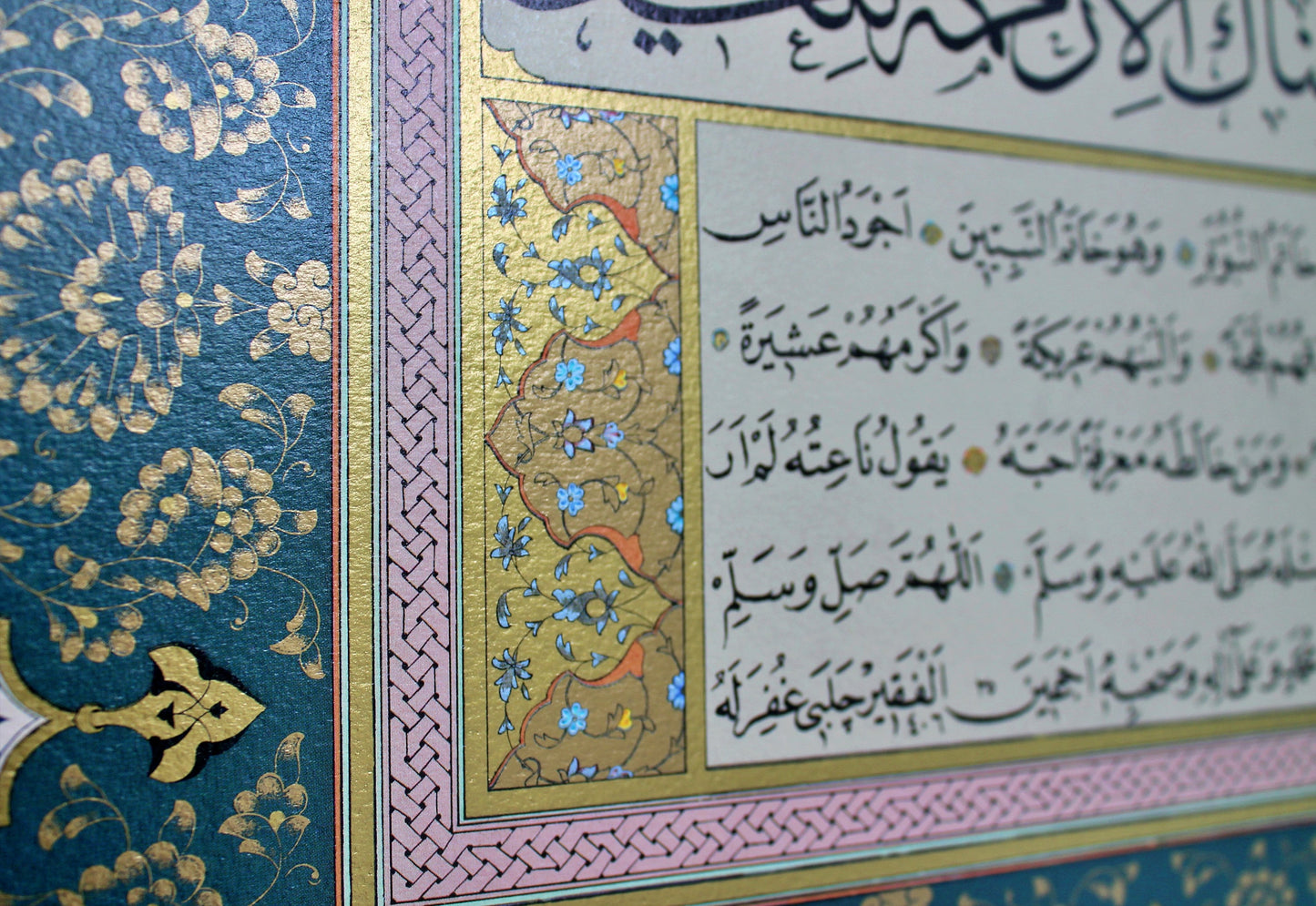
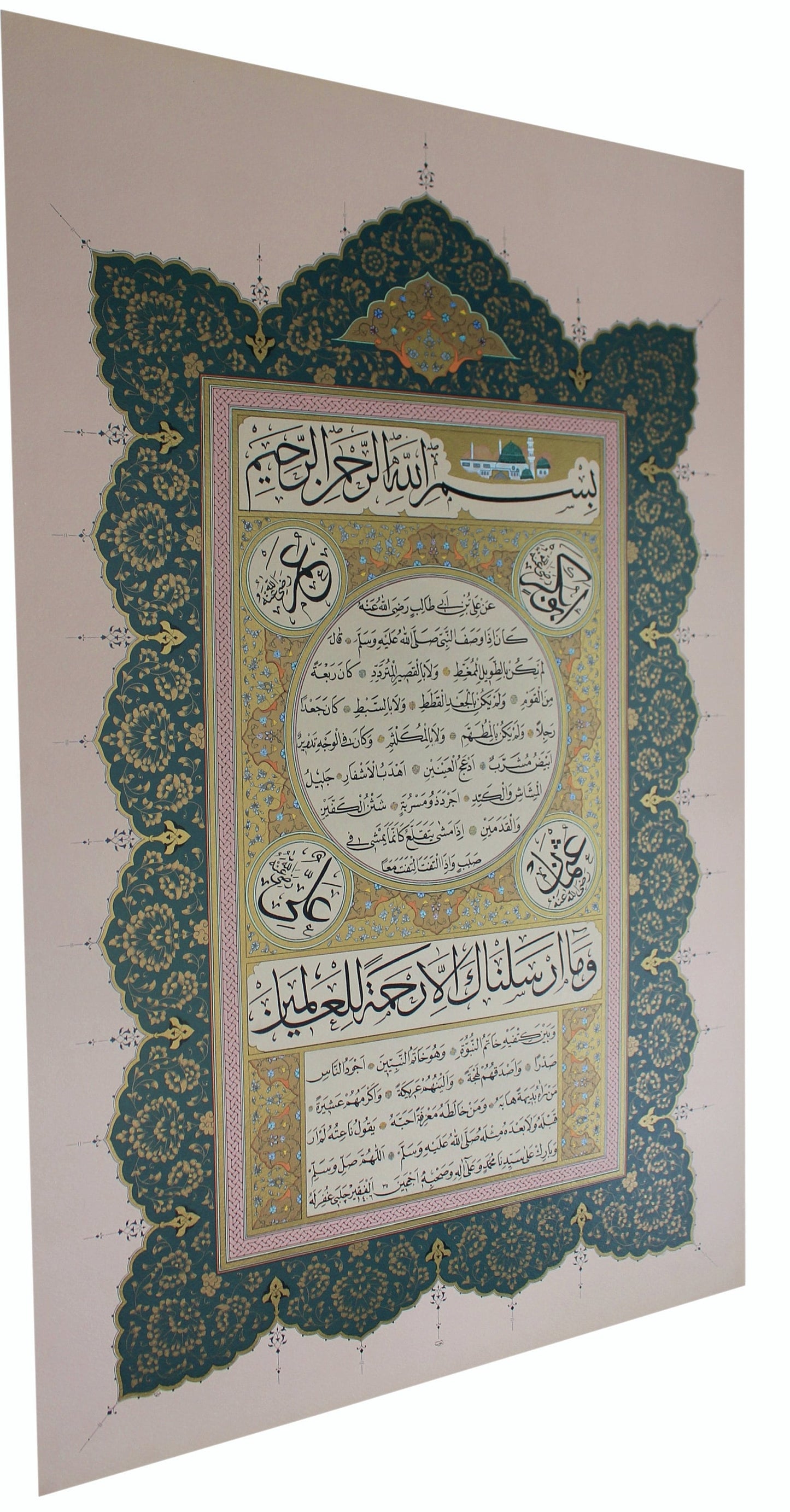
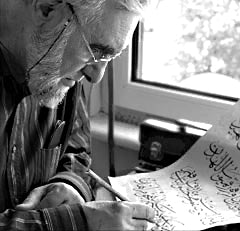
Hasan Çelebi
Born in 1937 in Erzurum, Hasan Çelebi is perhaps the most distinguished Turkish calligrapher of modern times, renowned for his style of classical Ottoman calligraphy. He studied with Hamid Aytaç, the last representative of the Ottoman school of calligraphy, from whom he received ijaza (license and authorisation to teach and practice) in Sülüs and Nesih after six years of study. He also obtained ijazah in Nasta'lik and Rik'a from the Turkish master calligrapher Kemal Batanay. Çelebi himself is the teacher of a number of notable calligraphers, including the müzehhip of the present piece, Ayten Tiryaki. He has restored calligraphic panels in prestigious locations around the world, including the Prophet's Mosque in Medina and the Sultanahmet Camii (Blue Mosque) in Istanbul. His own work can be found in mosques around the world. He is a member of the Muslim 500.
A history of the Ottoman Hilye
Initially, the word ‘hilya’ (Turkish: Hilye) referred to the various hadith which describe the beautiful physical appearance and moral character of the Prophet Muhammad. Many of these are found in the ‘Kitab al-Shama’il’ of Imam al-Tirmidhi (died 279 AH/ 892 CE), which was the earliest collection of its kind.
The first person to present the hilye as a calligraphic art form was the Ottoman master calligrapher Hafiz Osman in the later 17th century. He based his work on a famous hadith from the Shama’il. The earliest examples of calligraphic hilyes all carry the name of Hafiz Osman, and together, they show that by the end of the 17th century, Ottoman Muslims had begun to hang verbal portraits of the Prophet Muhammad on their walls. These descriptions were often combined with verses from the Noble Quran.
The basmala at the top of the hilye indicates the position of God above all things. Beneath this is a large rectangular zone (a large roundel surrounded by smaller roundels) which describes the Prophet and mentions the names of those closest to him in rank. The placement of the Rightly-Guided caliphs (and occasionally Hasan and Husayn and/or the Asharat al-Mubashshara) in smaller roundels parallels the monumental wooden panels that were erected in major Ottoman mosques, perhaps most famously the mosque of the Hagia Sophia.
The Prophet's own description in a large circular roundel invokes the similarly shaped sun and moon; the rising sun and the new moon are fitting similes for the Prophet’s beauty. Following this is a third section, featuring a verse from the Quran which refers to the Prophet as God's messenger to all people. Thus the middle section (between the basmala and the verse) can be seen as a zone intermediate between God and humanity, which befits the Prophet’s station as a messenger sent by God and an intercessor on behalf of his umma.
The final elements in the layout of the hilye usually identify the name of the scribe and the date of completion, which is the lowest position on the panel, and which well represents the humility of the calligrapher, who often identifies himself as al-faqir, one who is poor and destitute, and beseeches God to forgive his sins.

